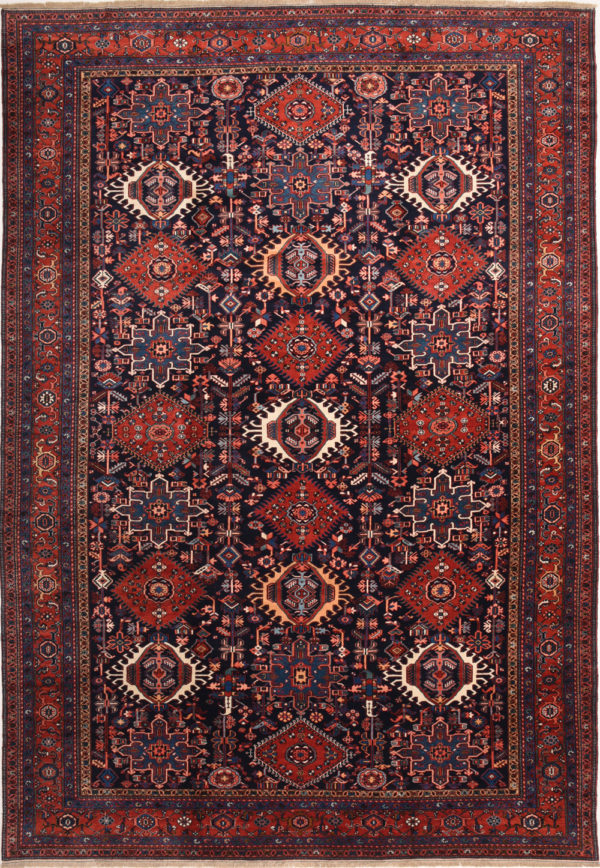Karaja
Karaja Rugs
Karaja rugs are created in Karaja, a small village located the northwestern region, about 35 miles from Tabriz, another major rug weaving center. The village is pretty isolated and accessible only by a single unpaved road.
Karaja rugs have very unique patterns that are different from the other Persian rugs produced in this region.
While Karaja rugs are similar to many of the Kurdistan rugs in color schemes, texture and nap length, the single major point of difference lies in the technicality of the weave.
Karaja rugs are distinguished by their loosely inserted single weft. Because of the way the rugs are constructed they are completely smooth on the underside. Another distinguishing characteristic is the heavy double binding that can be found at the sides of Karaja rugs.
Typical Color Schemes & Patterns of Karaja Rugs
The dominating color in the older rugs is a dark shade of red. The secondary color is usually a variety of red tones tending towards orange. Green is almost always used as an accent. In keeping with the color tends in western countries, the newer pieces have lighter colors on an ivory background. The dyes used in these rugs are 100% natural.
The field is covered with a repeating medallion design and all of the medallions have a very simple, geometric shape. The only other types of rug that features this repeating medallion design are those produced by the Turkamen tribe, who originate in the northeastern region of Iran.

The border typically features 3 stripes in navy or royal blue.
The bold motifs and patterns predominantly resemble insects, leaves and crabs. Although not very commonly seen, Karaja rugs also feature small sprigs of leaves and flowers or bushes, placed in very specific patterns throughout the field of the rug. The more commonly used pattern consists of rows of repetitive patterns, consisting of paisley or pear motifs placed within diamond formations. Some of the floral motifs are more stylized whereas others are more conventional in that the flowers, leaves and stems have a more realistic shape.
Another very common pattern that can be seen in Karaja rugs consists of just 3 or 4 diamond-shaped medallions. These medallions are massive and extend from one end of the rug to the other.
Karaja Rug Characteristics
Karaja rugs come in a range of sizes but they are mostly small to mid-size. The most commonly seen measurements are 4 x 6 feet to 8 x 10 feet. Long runners are also common with a few larger rugs measuring 10 x 18 feet.
The foundation of the rug is very durable. Cotton is usually used for the warp and the weft is either made of wool or cotton. The pile is tightly constructed with a long nap of soft, lush wool.
Related Categories
Village Rugs | Heriz | Mehraban | Azerbaijan